Recently, the Driving Creek conservation team had the opportunity to delve deeper into the fascinating world of moths. Local moth enthusiast Tony Steer visited our team and generously shared his extensive knowledge.
Uncovering New Zealand’s Moth Diversity
The exact number of moth species in New Zealand remains unknown, as new species continue to be discovered and taxonomic revisions occur regularly—identifying moths can be quite complex. The Driving Creek team learned that identifying similar species often requires a detailed inspection of moth genitalia. Additionally, the team discovered that there are approximately 1,700 described species of moths in New Zealand.
The Ecological Importance of New Zealand’s Endemic Moths
New Zealand’s isolation and unique environment have led to the evolution of many endemic moth species found nowhere else in the world. Moths play crucial roles in ecosystems as pollinators and as a food source for various predators, including lizards, birds, and bats. These moths inhabit a range of environments, from forests and grasslands to urban areas. While most moths are nocturnal, some species are active during the day. Certain moths are host-specific, laying their eggs only on particular native plants, meaning that understanding moth populations can also provide insights into local plant species.
Future Efforts to Study and Protect Moth Populations
With Tony's guidance, the Driving Creek team will soon deploy special light traps to assess the diversity and abundance of moth species at Driving Creek. The team extends their gratitude to Tony for his invaluable introduction to this captivating world.

A weekend trip from Auckland to the Coromandel Peninsula offers the perfect blend of nature, adventure, and relaxation. We’ve created an itinerary to help you make the most of your weekend away!
Morning:
Start your journey early from Auckland, which is a 2 to 3-hour drive to Coromandel Town, depending on traffic. Consider stopping in Thames, a charming halfway point, for a quick break. If you’re up for a challenge, the Pinnacles hike offers an adventurous start to your trip.
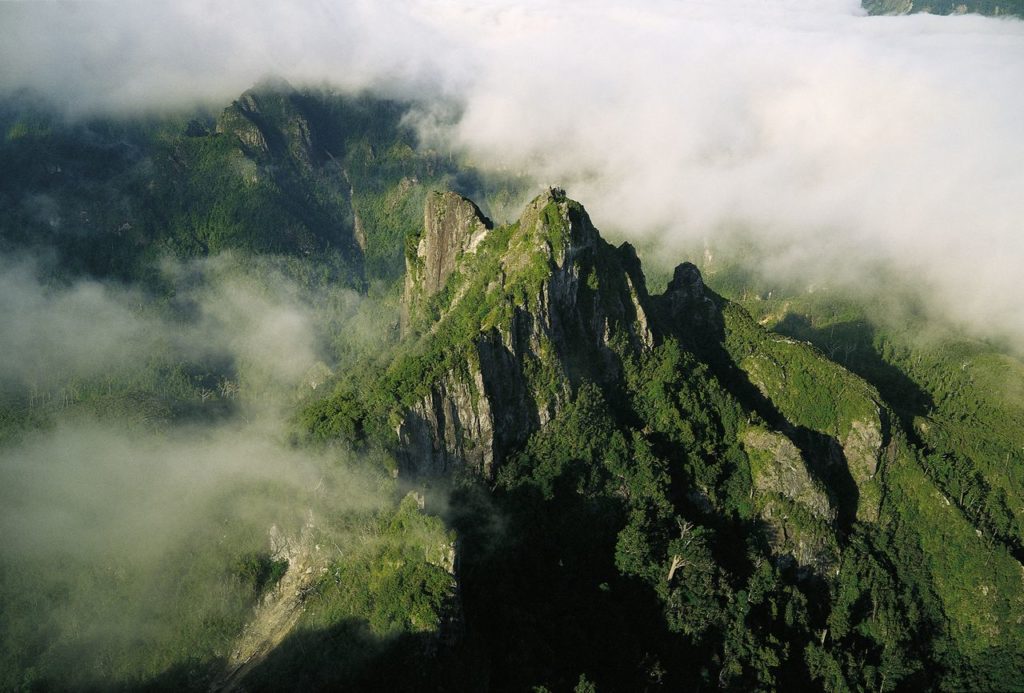
Midday:
Arrive in Coromandel Town around midday. Take some time to explore this quaint town, known for its artsy vibe and charming galleries. You might enjoy visiting the Coromandel Historical Museum to learn about the area’s rich history, including its gold mining past. If the weather is warm, consider a refreshing dip at Oamaru or Waitete Bay—more beach options are available in our ‘Top Beaches’ article.
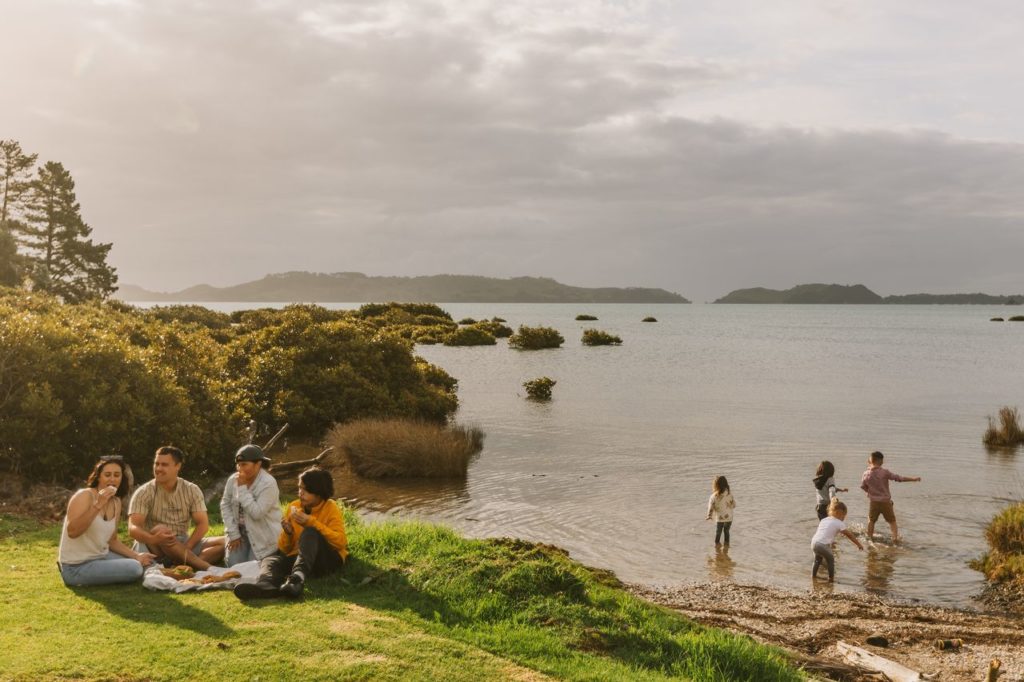
Afternoon:
Spend your afternoon at Driving Creek Railway, Pottery, and Zipline for a unique experience. Enjoy a scenic train ride through native forests while learning about Driving Creek’s history, or, if you’re seeking an adrenaline rush, try the zipline tour. For those inclined towards creativity, a beginner pottery class might be just the thing. Driving Creek has something for everyone!



For lunch, consider one of the local eateries, such as Weta or Umu.
Evening:
A sunset walk around the Kauri block walk is a lovely way to end your day. This 1.5 km walk starts with a steep uphill climb that rewards you with stunning views of the sun setting over the ocean.

Check into your accommodation—Coromandel Town offers a range of options, from cozy B&Bs and boutique hotels to holiday parks. For a luxurious stay, Buffalo Lodge is a great option, while both the Coromandel Top 10 Holiday Park and Shelly Beach Top 10 Holiday Park offers a relaxed family vibe.


End your day with dinner at a local restaurant or pub. The Pepper Tree Restaurant or the Star and Garter Pub are both excellent choices.
Morning:
Start your day with a short 20-minute drive from Coromandel Town to Waiau Falls and Kauri Grove along the 309 Road. You’ll find a beautiful waterfall (perfect for a swim if you’re brave enough to face the cold!). Nearby, the Kauri Grove walk offers a chance to see some of the largest Kauri trees in the region.


Midday:
Continue along the 309 Road until you reach Whitianga. The Lost Springs Day Spa is a must-do in Whitianga, offering relaxation and calm. Afterward, stretch your legs along the Whitianga waterfront and grab lunch at one of the local spots. Blue Ginger, a popular Asian fusion restaurant, or Grace O’Malley’s, a classic Irish pub, are both excellent options.

Afternoon:
After lunch, begin your drive back to Auckland, aiming to arrive home in the afternoon. This will give you plenty of time to unwind and reflect on your Coromandel adventure.
By Holly Morgan
Nestled amongst the rolling hills and lush trees in the coromandel, a group of eager clay workers from around the country gathered at the iconic establishment Driving Creek Railway (DCR). Connected by a material, excitement built as we were about to embark on a five day Onggi Masterclass by Korean Master Kwak Kyung Tae & Marco Minetti. The class was nothing short of masterful, filled with eloquent techniques designed to gain an in-depth understanding of the ancient art of making Onggi. My hands are trained in production potting (on the potter's wheel) and each day we were challenged with new interesting skills that by the end of the course we could string together to give us a base level of training to take back to our studios to practice.
Day one, this was spent making very long coils, I particularly found this step quite satisfying. Stretching otherwise solid particles of dirt and water and forming them into 8 sided faceted 'noodles' that we could carry, stack, sling and slide along our hands. Slowly. At the end of the first day, I knew that it was just the beginning and we got a glimpse into the level of detail Kwak and Marco had put into the course. I could tell from the outset that the week was going to be challenging, fun, and inspiring.
Day two, things turned up a notch, our hands really went to the gym and I found myself dreaming about Onggi and waking up at 2am to massage kawakawa balm into my hands. We went on to making our bases, adding our first coils, and were introduced to 'taryeom jil' the art of attaching the coils. It's within this particular technique that I believe holds one of the special charms in making Onggi. When proficient, you have the ability to build forms in a day and manipulate the clay in a way that gives the work structure, height and support with a relative speed. For me, and others when I asked around - this was the most challenging step in the process. I felt very grateful to have been given the opportunity to have it broken down and spelled out. Even so, I felt like my brain couldn't connect to my hands and it wasn't until the last day that I felt a sense of ease. Maybe it was because i'd been beaten into conformity, like the wall of an Onggi pot. Onggi 1 Holly 0.
The following days merged into the melting pot, our guards dropped and with a couple of social evenings cooking pizza under the starry sky, and sharing meals huddled around Barry's Kauri slab table things felt like they were just warming up. We sunk into a rhythm, and the dedication, commitment and focus was unanimous amongst our group of ten. Participants often slipped into class before the day started or skipped half of lunch to head in early to get a couple of extra coils under their belt so to speak. Attaching the coil was a complex yet visually simple motion which involves the slide and movement of both hands working in unison. Squeeze, slide, rotate, up, compress, fill, lock, attach, okay adjust, now the next 1cm. What the videos you see online don't highlight, is the generational knowledge and the sense of feeling and connection with the clay. The material that we are all so familiar with, now being used in a rhythmic dance. I wonder if Kwak ever switches off and allows his mind to wonder?
The final steps of making onggi was to use the su-rae and do-ge to shape and form the jar. When thinking back, getting the hang of this technique was largely about sound as it was how the tools were used. Steady hands grasp hand shaped tools, pop pop pop. The items had been designed by Kwaks teacher and had been soaking in water for a few weeks to add weight. pop pop pop ''Too much power' 'more power' striking a fine balance to create equal amounts of pressure to let the tools bounce and peel off the clay. A seismic meditation. Before long, voluminous bellies emerged each with the motion and essence of the creator or creators in some instances. As someone who feels comfortable exploring large round forms, I've described working away on pieces similar to these as 'therapy pots' so many tiny moments and opportunities for them to take on a life while you're spending time with them. It wasn't all smooth grooves and sunshine, there were moments when you thought that maybe things weren't going too well - and it was amazing to see what a few slaps from your hands on the walls of the vessel could do to improve the shape so you could carry on. Many in the class got to take home a couple of jars by the last day, it was so cool to see the progress. As I'm a slow hands on learner, I took my time and ended up with one larger form which I named 'hand holiday' - mostly because it was not. And to be honest, I snuck off to throw a pot at one point to make sure my hands did still remember what to do. They did - phew!
The whole process had a symbiotic rhythm and movement to it, just like wheel throwing when you get it, you can make it look easy. Fluid tai chi motions when stretching the coils, through to the transfer of energy between you and a lump of earth. It's beautiful, mesmerising and easy to let the world around you slip away. Kwak and Marco were wonderful teachers, Kwaks dedicated approach with humour and delight in the craft accompanied by Marcos' patience, kindness and lightness complimented each other and their approach. They made the participants feel at ease to make mistakes and instilled the confidence to try something completely new and out of their comfort zone. Moreover, aside from our basic Onggi training, we were shown ways for us to see how these new techniques could be used in modern and contemporary ways - re-thinking the way we approach the material. As the dust settles in a pink haze I'm enthused and excited to introduce my new tools to my studio and see what I can do from attending this course. I feel like I've been rewired, and with a small evening practising since the course ended - I can't look at coils in the same way. With the limited time that we did have, I know that the Korean ceramic history is rich and deep - while I know i've only brushed the surface, I do hope to one day make it to Korea to first hand experience Onggi in their homeland and to learn more about this ancient art.
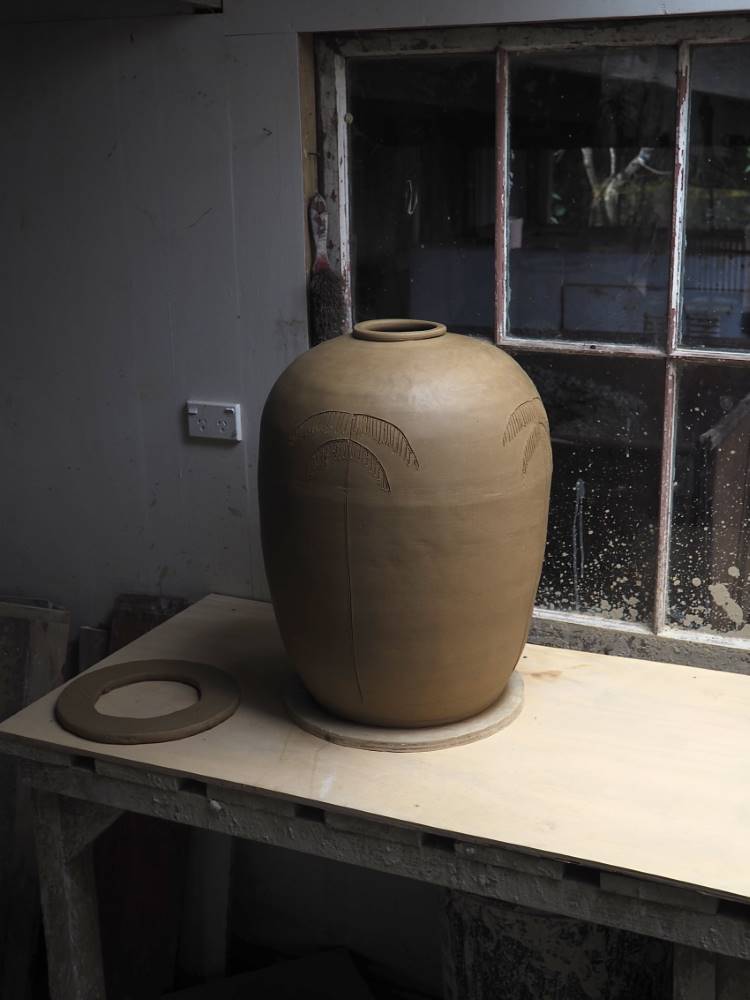
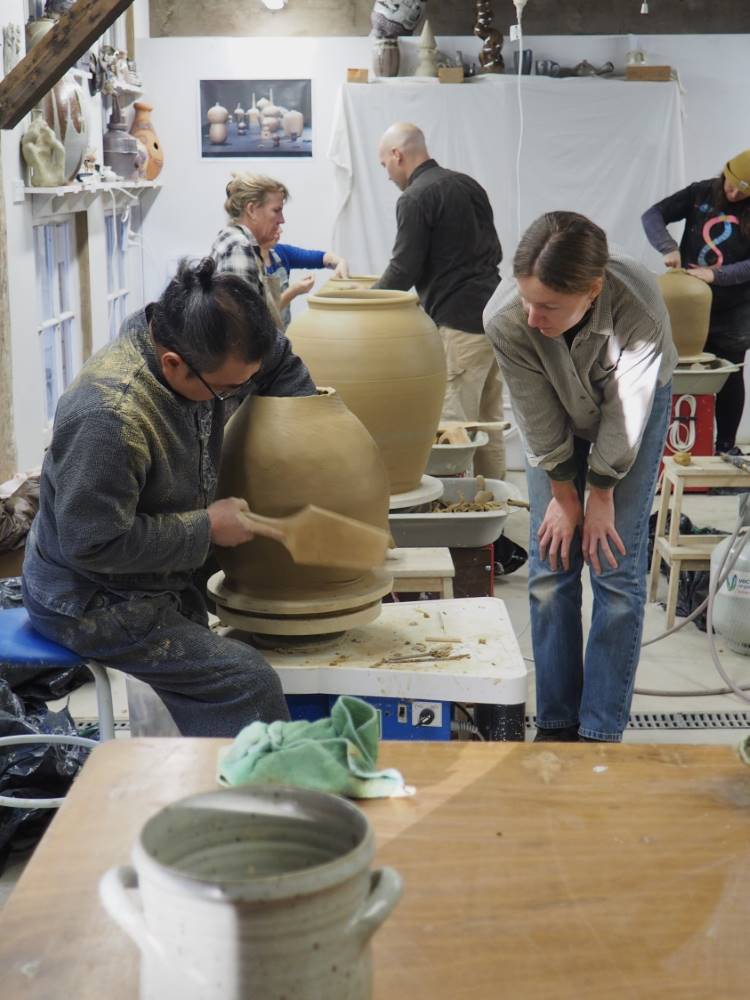
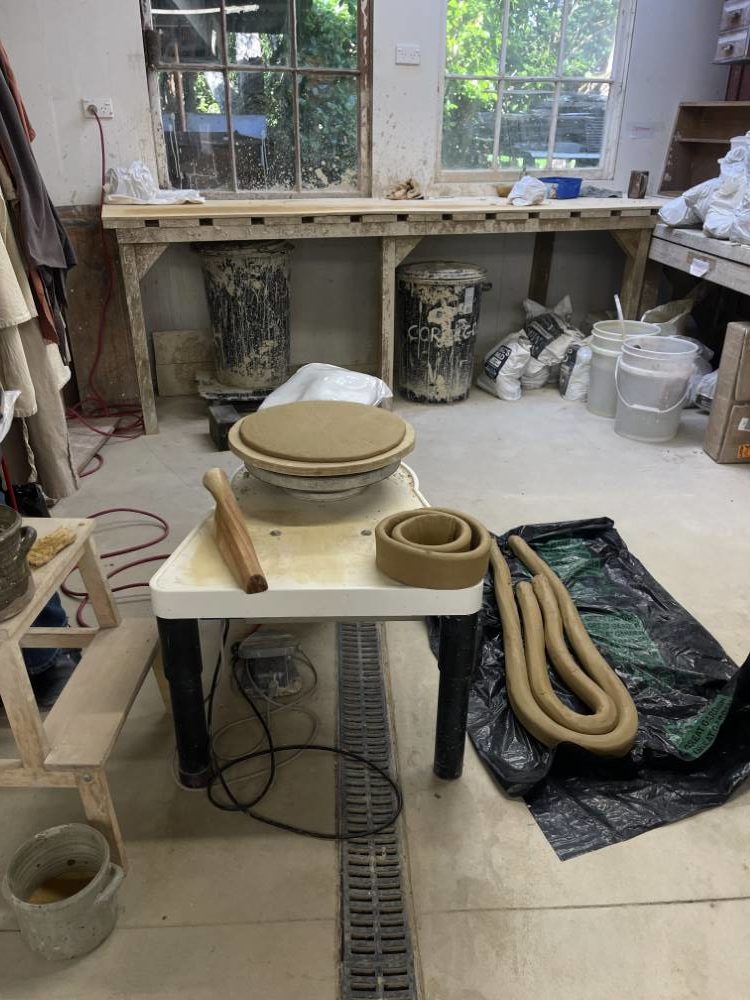
Have you been wondering what journey your pottery encounters after you leave your pottery class? This article describes the incredible process your pottery goes through from when you make your unique item in your pottery class at Driving Creek, to your pottery being delivered to your home.
After your class, and once you have moulded the clay into its final shape, the pottery is left to dry to ‘leather hard’. The initial drying process can take up to one week but varies based on how thick the clay is and even what the weather is like. Once the pottery reaches this semi-hard level, it is then trimmed by one of our Pottery Tutors to remove excess clay from the bottom and is then set aside to dry fully.
When the pottery is fully dry it is ready to be bisque fired in a kiln. A bisque firing is where the pots are fired, or more simply baked, in a kiln at 950°C. This firing removes any remaining moisture, which reduces the size by approximately 15%, and makes the pottery more durable and porous enough to absorb glazes.
The bisque firing also makes the pottery pieces stronger and more convenient for handling during the glazing process. The firing takes around 12 hours, and is then left for another 12 hours to allow the pottery to cool slowly.
Once the pots are out of the bisque kiln they are ready to be glazed. Glazing is a truly amazing process where pottery comes to life by adding colour, texture and depth to the surface.
Glazes are made using minerals and oxides that add colour through colouring oxides such as cobalt, copper, iron, chrome, manganese, rutile, nickel, vanadium, and rare earths which are used in our range of pottery class glazes you were able to choose from. You can even change the way a glaze appears through different combinations, layering and techniques.
The glazing process is both a science and an art with many ways of applying a glaze from brushing and dipping, to spraying and pouring, each method alters the final result. The firing temperature, viscosity (thickness) of the glaze and atmosphere inside the kiln all play a role in the final outcome.
After the pottery is glazed it is then fired in the kiln for a second and final time. The second firing is called a ‘glaze firing’ and is where your pottery is fired for approximately 8.5 hours to slowly reach 1220°C. The specific temperature is to ensure the clay is vitrified (becomes a glass like substance) and the glazes are melted, creating a durable and beautifully finished piece of pottery.
The pottery is then left in the kiln for 2 days so it slowly cools before opening it to prevent cracking the pottery due to a sudden change in temperature.
While the pottery cools the anticipation builds and the moment of truth arrives- the unveiling of the finished piece. What was once a ball of clay has been transformed into a work of art, rich in colour, texture and character. Each piece being uniquely handcrafted in your pottery class.
The pieces are then carefully packaged by our Pottery Tutors and picked up by the courier to be delivered to you to enjoy in your very own home!
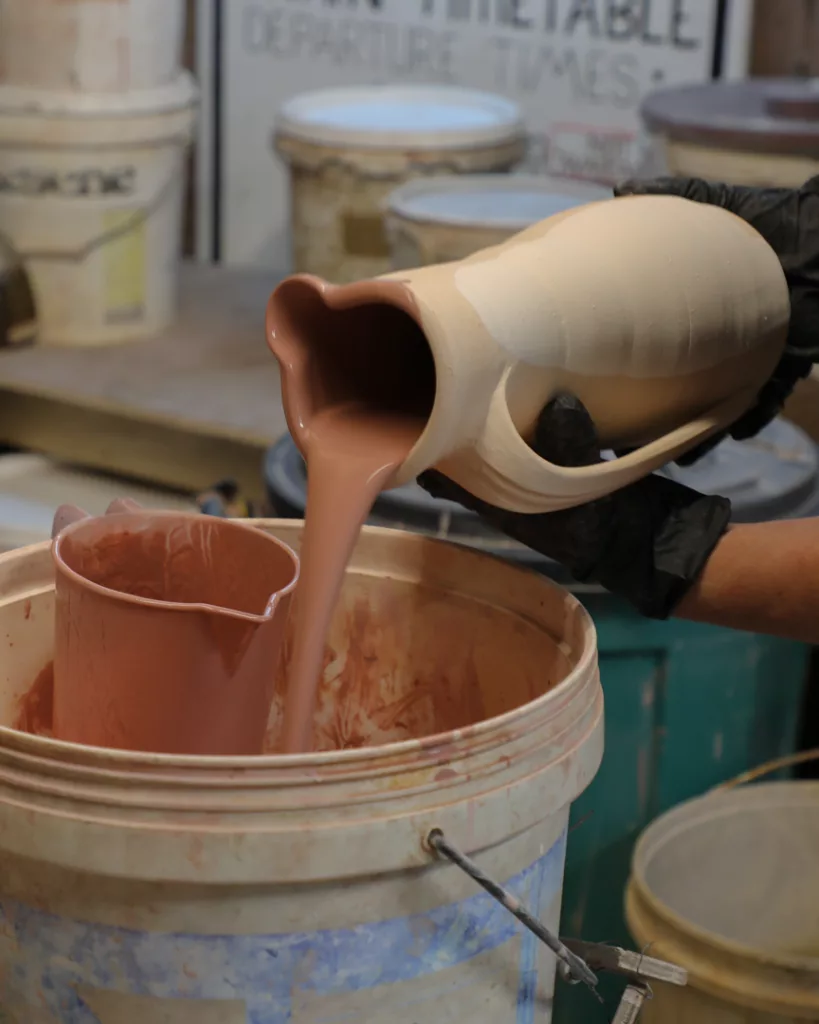
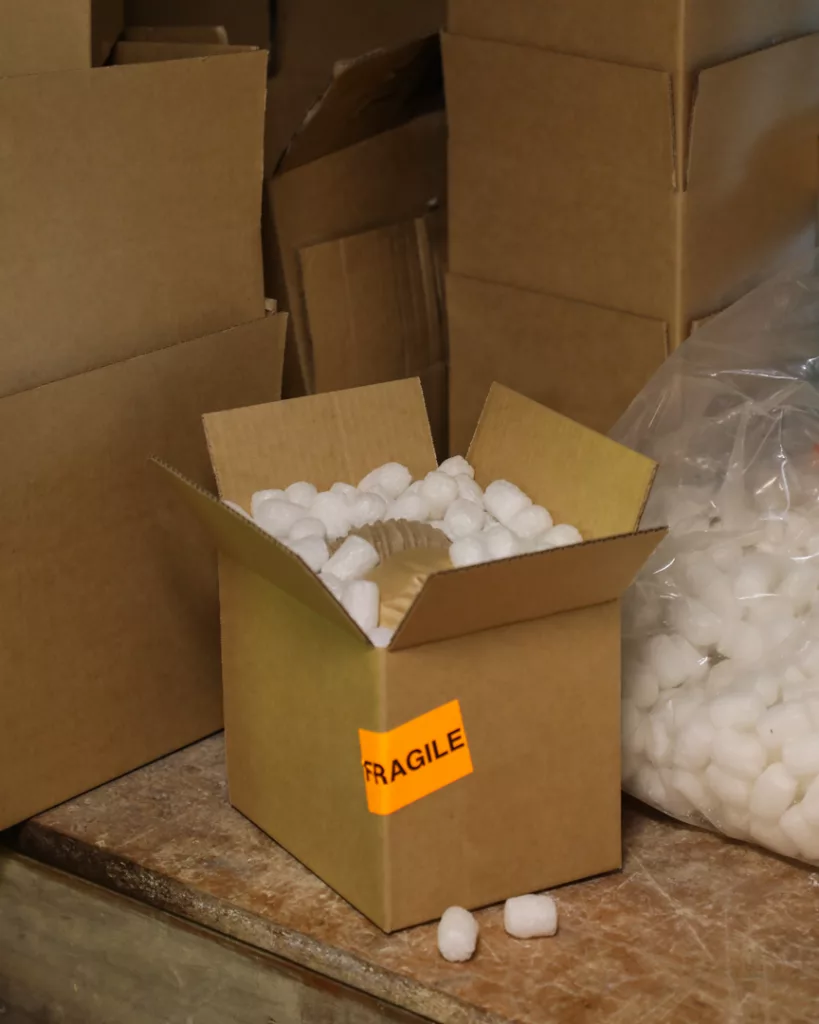
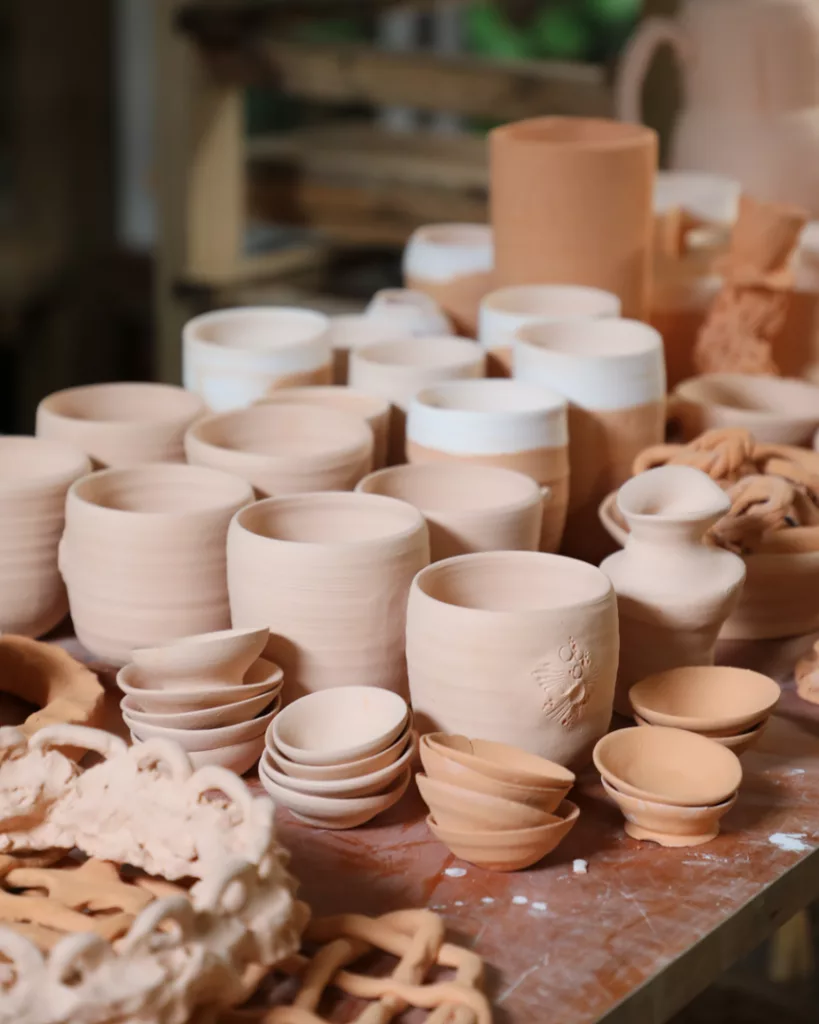
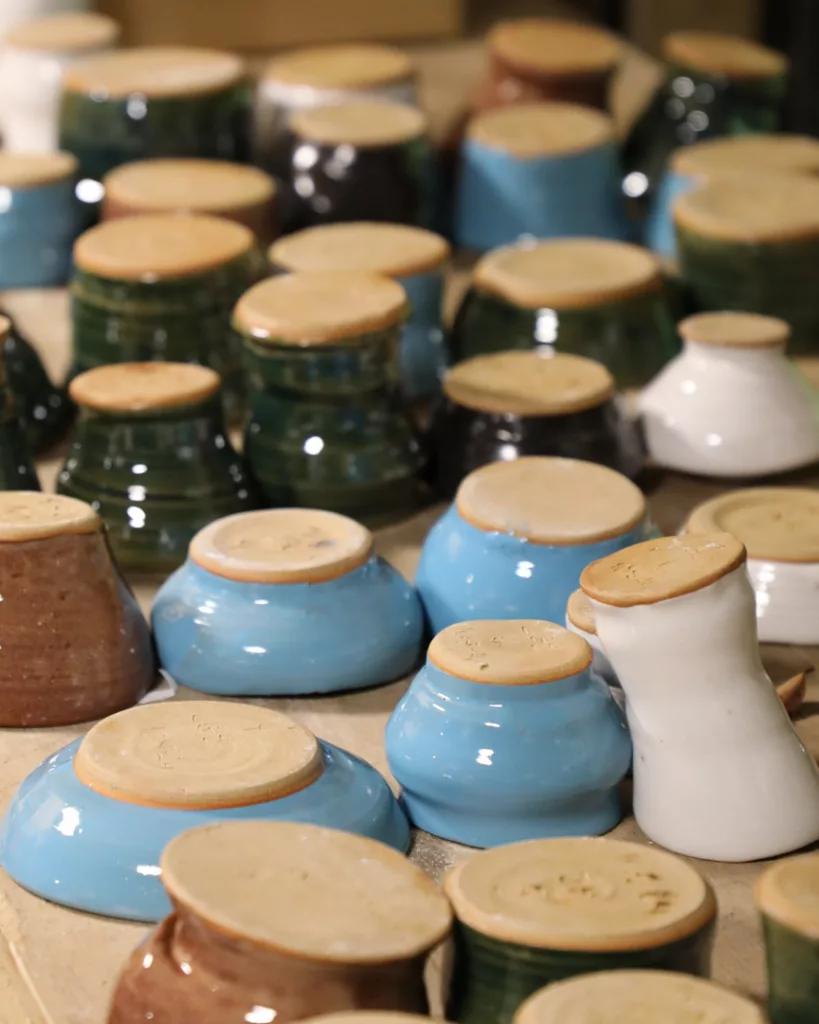
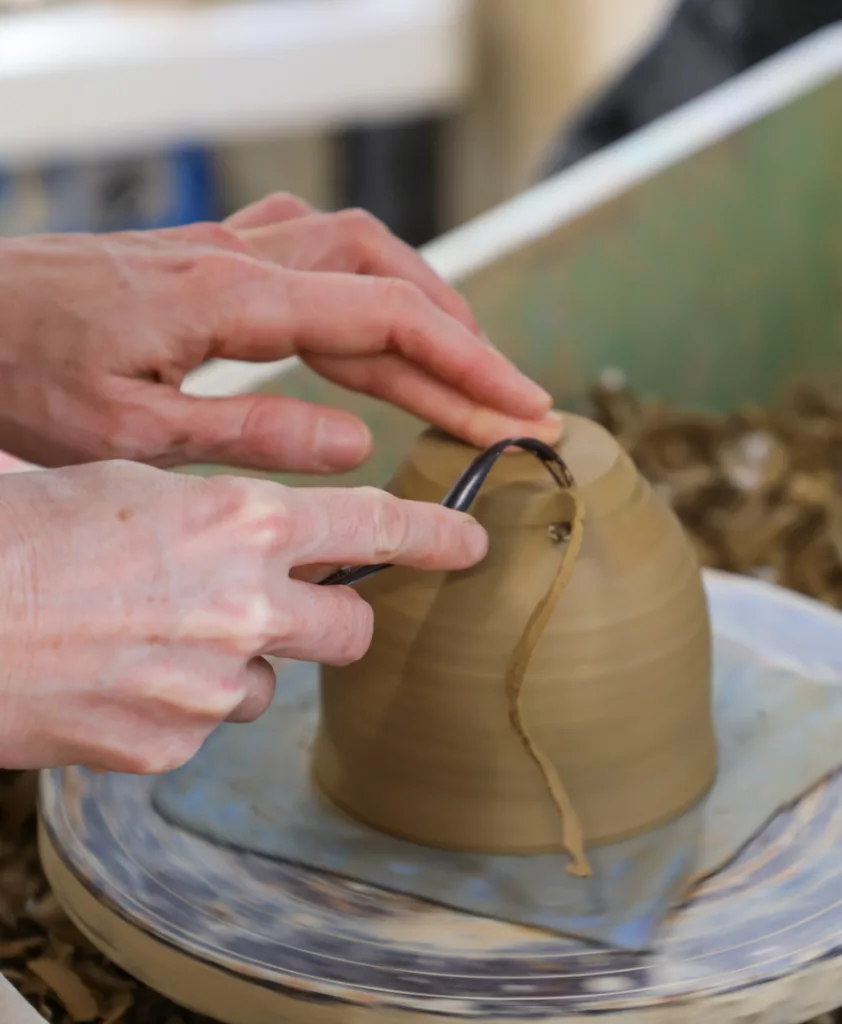
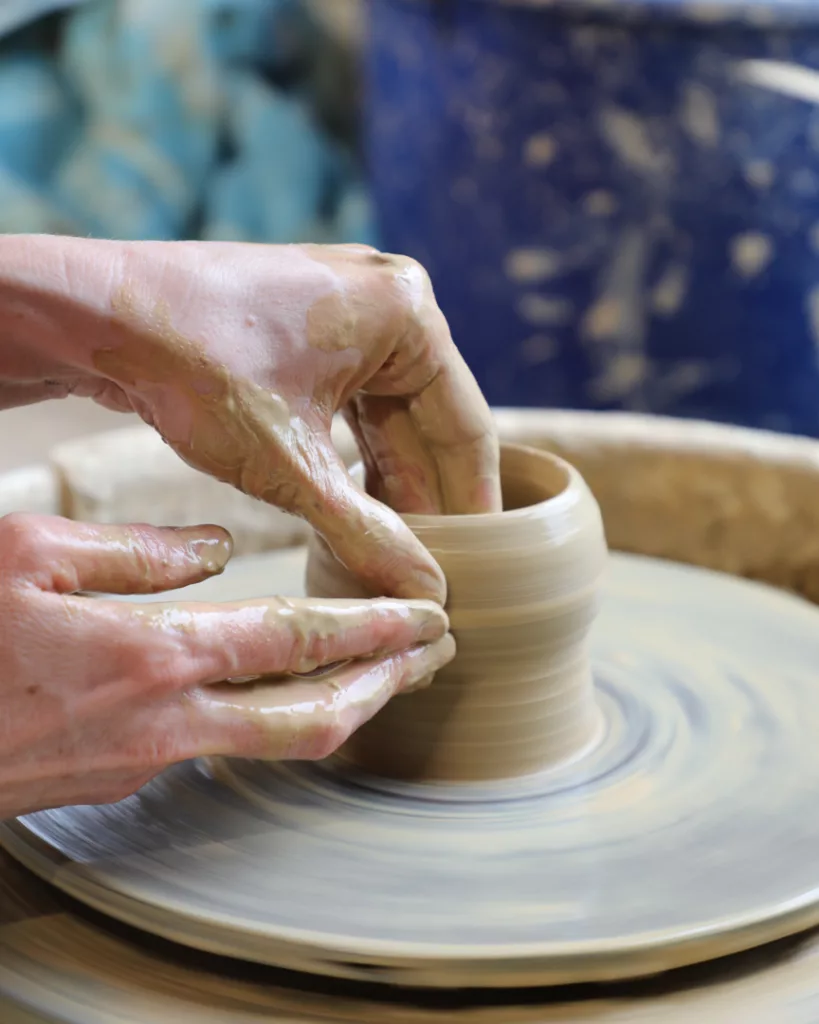
Elephant, one of Driving Creek's beloved trains, is undergoing an upgrade. Elephant was Barry Brickell’s favourite train and holds a very special place in Driving Creek’s history. The Driving Creek Engineering Team have converted Elephant to a diesel-hydraulic powered motor alongside Gavin Brickell, Barry’s brother and mechanical engineer.
Elephant was originally built by Barry as a workhorse in 1979, using salvaged and reconditioned parts. The original motor was repurposed from a Fordson diesel truck and had a 4-speed gearbox from an old Bedford truck. The gearbox was later switched to a Paragon marine gearbox that connected to a driveshaft and spline universal, allowing the same 4 speeds forward and reverse to better traverse the unique railway.
During the early years and as the train tour became more popular, an open-side passenger carriage was made to be towed by Elephant, allowing more visitors to experience the railway. Although Elephant is not used for rail tours anymore, it is still used for track work and as a towing vehicle in case of breakdowns. Its powerful engine and small size allows it to fit in the switchbacks, alongside the larger trains when towing.
Maintaining this system became very difficult and costly with the need to replace the old worn gearbox. After searching for a replacement paragon gearbox and compatible hydraulic drive to the Fordson motor proved fruitless, it was decided a complete engine replacement was necessary. As Driving Creek’s other trains have been designed or converted to a diesel hydraulic system to more effectively operate on Driving Creek’s mountain railway, it was also decided to use this opportunity to convert Elephant to hydraulics.
The recent conversion included replacing the old Fordson motor with a reconditioned Perkins engine which the engineering team converted from 24 volts to 12 for the injector and start motor. A purpose-built hydraulic tank, built in the workshop, a new hydraulic pump, hydraulic drive and sprocket were also installed.
Other modifications made to Elephant over the years have included Barry’s handmade exhaust manifold, which was adapted to fit the new engine to keep the same original aesthetic. Elephant also was upgraded with a new radiator so all three ‘big trains’ are interchangeable with one another.
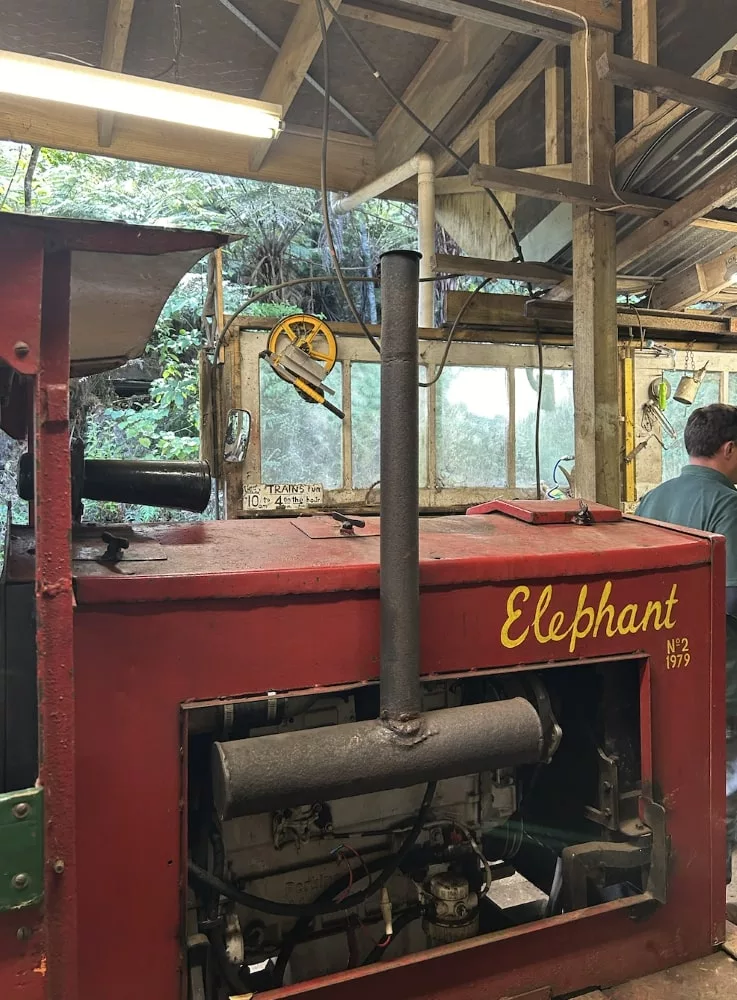
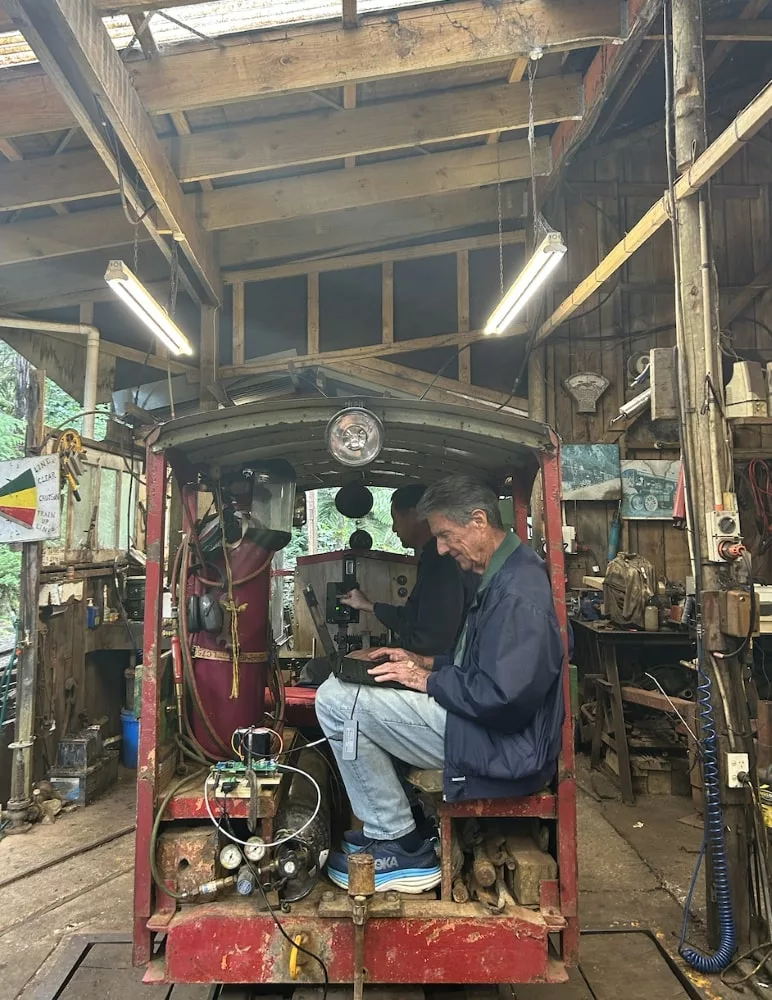
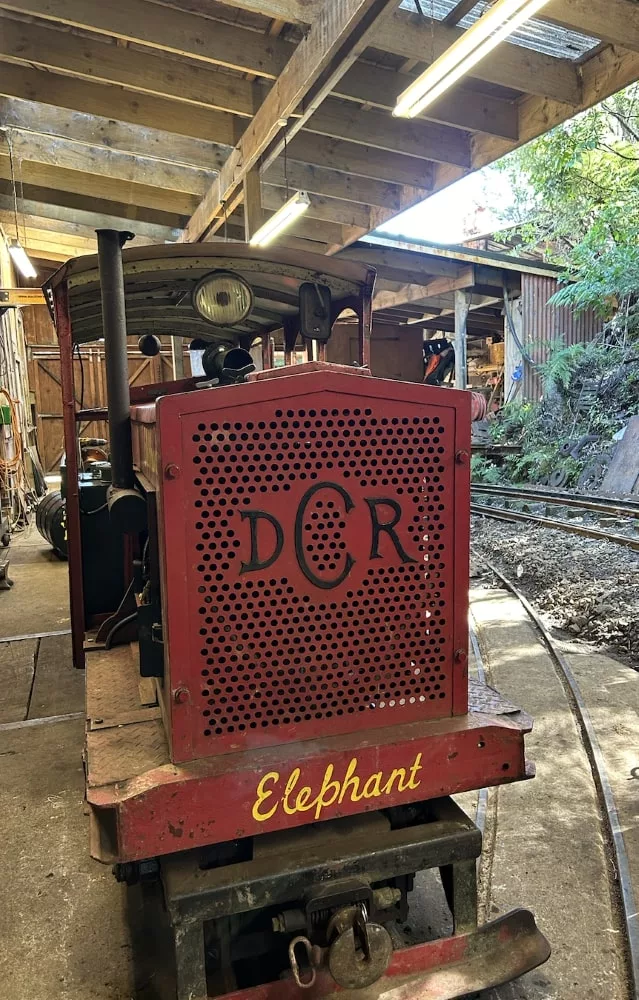
*Pictures show Elephant in the workshop with Gavin, Beran and Jade, the engineering team.
Coromandel Town has a range of attractions and activities visitors can do for free we would love to share with you.
Coromandel Town is a historic town known for its mixture of coast, native forest, history and artistry. It is a haven for talented artists and craftspeople inspired by the land and seascapes. Along with its broad range of paid tourism experiences, there are free attractions that draw people here too.
Here are some of Coromandel Town’s best must-do’s, hidden gems and local favourites to add to your Coromandel escape. Please remember to care for these incredible places by leaving them as pristine as you found them and keeping to the Tiaki Promise.
Waiau Falls
Along the 309 Road lies the entrance to the Waiau Falls trail. You can walk through a beautiful lush bush to the stunning waterfall and deep pool below. If you’re feeling adventurous and keen on a refreshing plunge, this is the perfect adventure for you. The waterfall is a popular local swimming hole, so don’t forget your towel!
Getting there:
Waiau Falls is 10km from Driving Creek. To get there from Coromandel Town, head up the 309 Road towards Whitianga. Travel 7km along the 309 Road until you reach a parking space on the left hand side of the road where the track to the waterfall starts. You can also click Waiau Falls to open it in Google Maps.
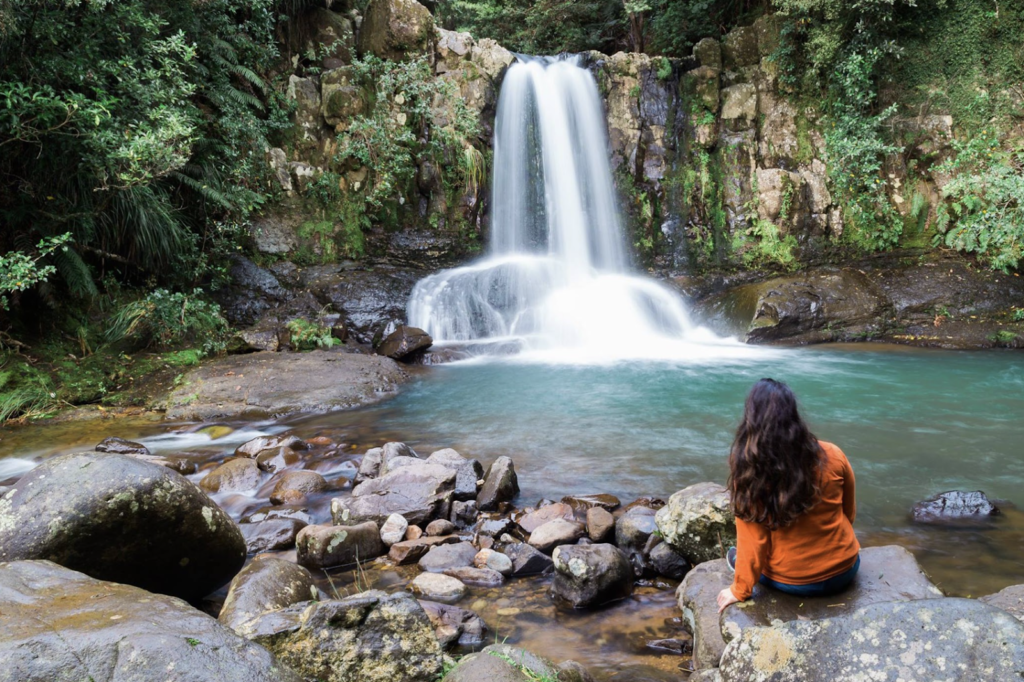
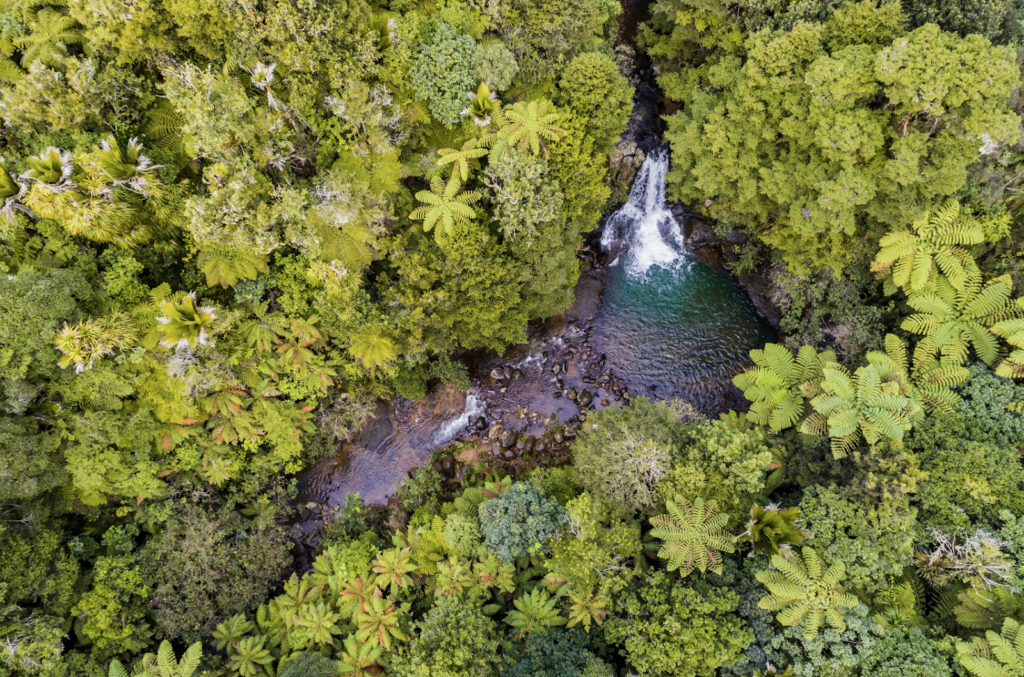
Waiau Kauri Grove
The Waiau Kauri Grove is a spectacular stand of Kauri trees that soar above the surrounding native forest, with the walkway starting 1km further along the road past Waiau Falls. These Kauri are of special significance to The Coromandel, being the largest easily accessible grove of mature Kauri in the region- they are truly magnificent.
The track is very well formed with footbridges and boardwalks, which take you close to the trees while protecting their roots. An excellent walk for nature lovers. If you are planning on walking through the Kauri Grove, please be sure to use the wash stations and keep to the tracks to protect these ancient natural taonga from kauri dieback disease. The walk takes approximately 30 minutes each way and is a must-do experience.
Getting there:
The Waiau Kauri Grove is 10.2km from Driving Creek. To get there from Coromandel Town, head to the 309 Road. Travel 7.2km along the 309 Road, 200 metres past the waterfall, until you reach a parking space on the right hand side of the road. You can also click Waiau Kauri Grove to open it in Google Maps.
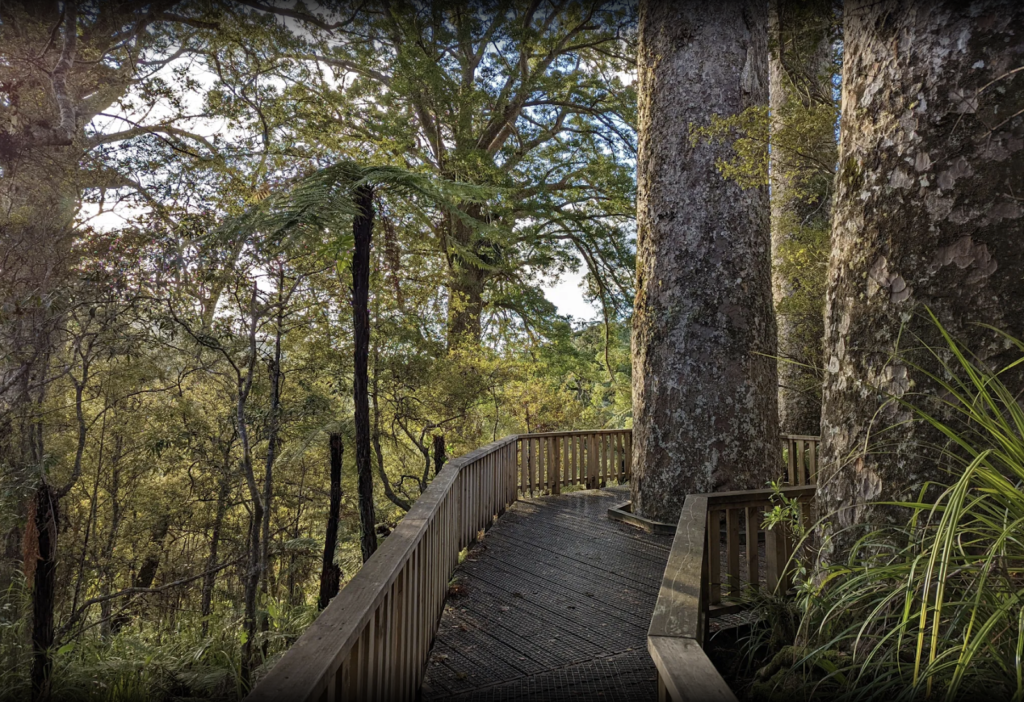
Kauri Block Walk
The Kauri Block offers you a fantastic panorama of land and sea with a variety of uphills and down. The walk follows a ridge through regenerating bush and native plantings beneath the Te Kauri Pā. The track forks 10–15 minutes in.
If you head up the right-hand fork, you will reach the highest point- an old pa site that offers spectacular 360° views of ocean, islands, township and surrounding ranges. The left fork will keep you on the main track following the ridge through the bush until it emerges at Harbour View Rd. The entire walk takes one and a half hours at a gentle pace.
Getting there:
The Kauri Block Walk is 3.4km from Driving Creek and close to the Coromandel Town centre. You can access the track from Harbour View Road. Park opposite the Kauri Block Walk sign in the gravel car park, and be sure to clean your footwear at the station provided to protect the Kauri trees. You can also click Kauri Block Walk to open it in Google Maps.
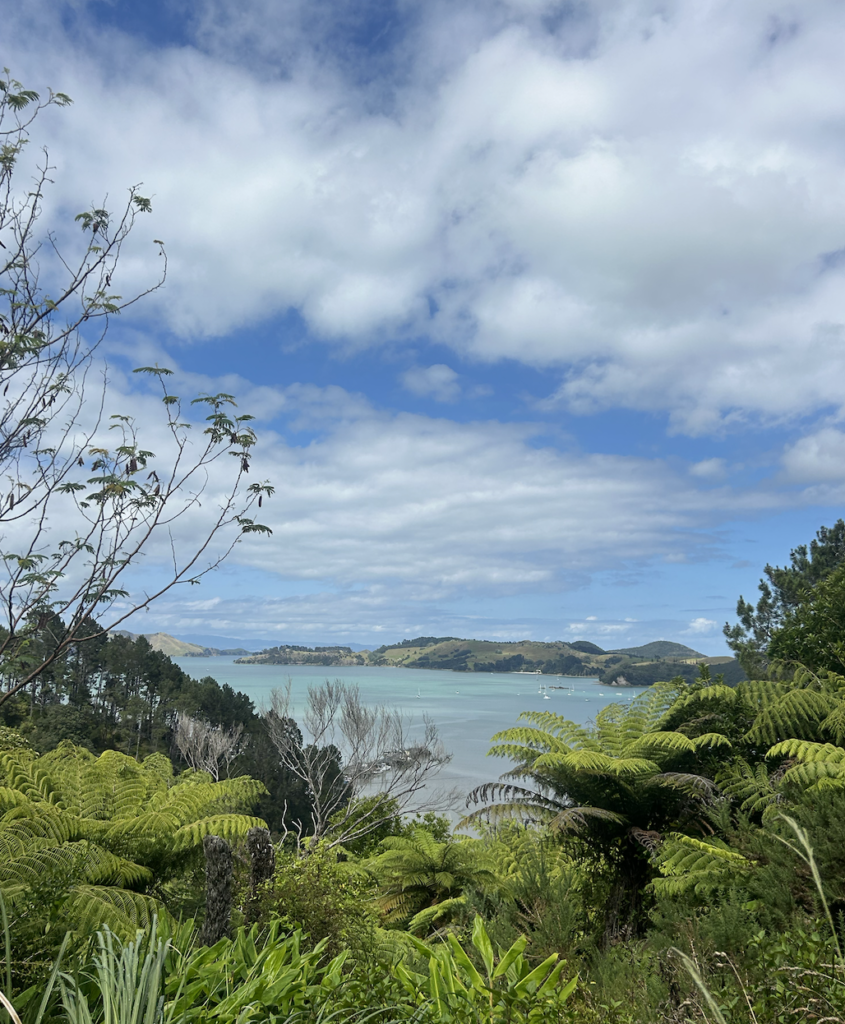
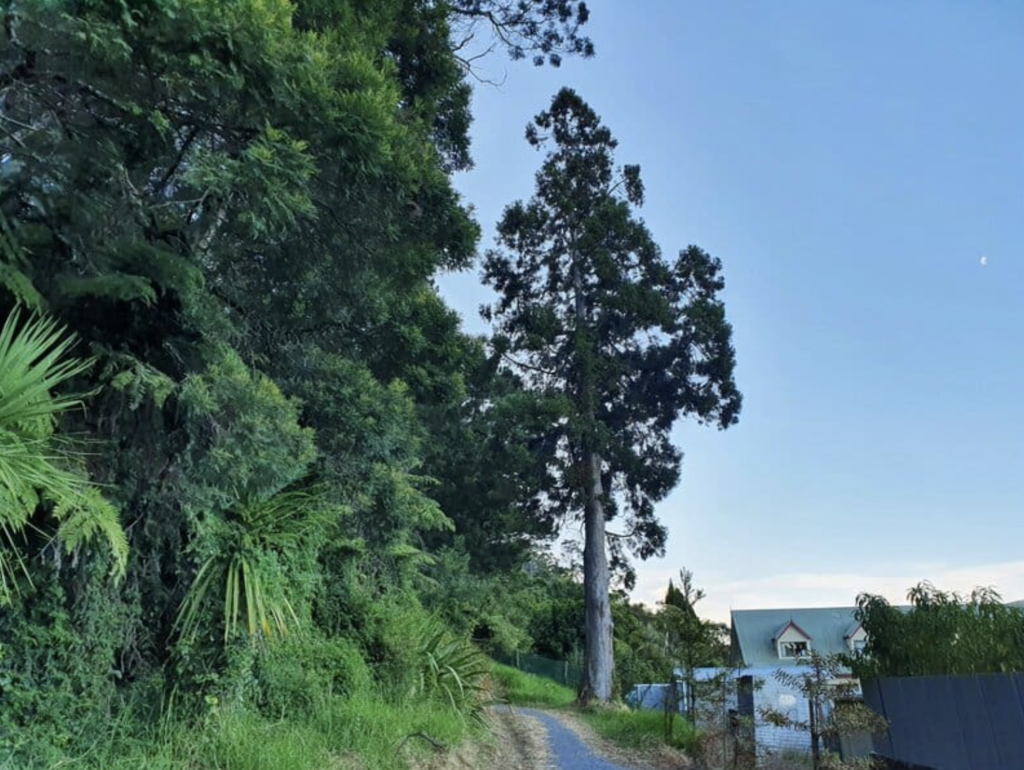
Long Bay Walk
Another favourite walk of ours in Coromandel Town is from Long Bay, through Tuck's Bay and onto another Kauri Grove track. The walk is an easy 1-hr return loop along the coast with stunning ocean views and through beautiful bush, including a 1200-year-old kauri tree and many younger kauri. The walk is best done at high tide to encompass the best of both beach and bush, and offer the opportunity to cool off in the ocean afterwards. The Long Bay walk is also a spectacular sunset spot looking out across the Hauraki Gulf.
Getting there:
The Long Bay track is 5.5km from Driving Creek and starts by the Long Bay Campground. Parking is on the left hand side of the road by the beach. You can start the walk from either the north end of the beach or opposite the beach towards the forest. Clean your footwear at the easy to use shoe-cleaning station at each end of the bush section to help prevent the spread of kauri dieback disease. You can also click Long Bay to open it in Google Maps.
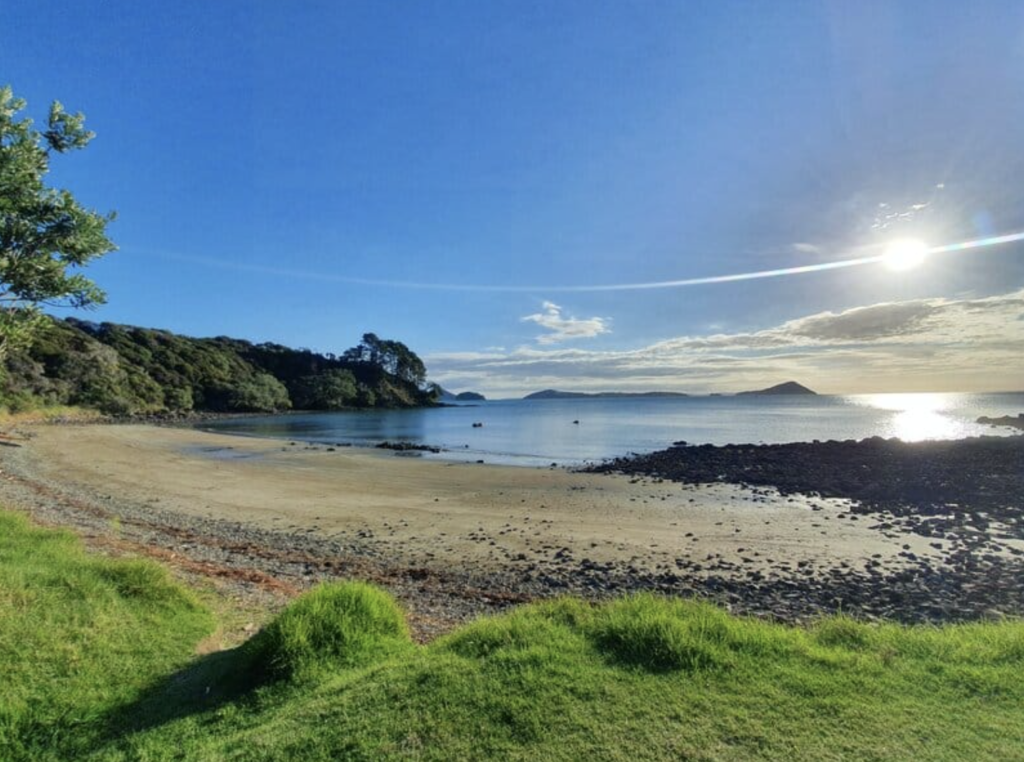
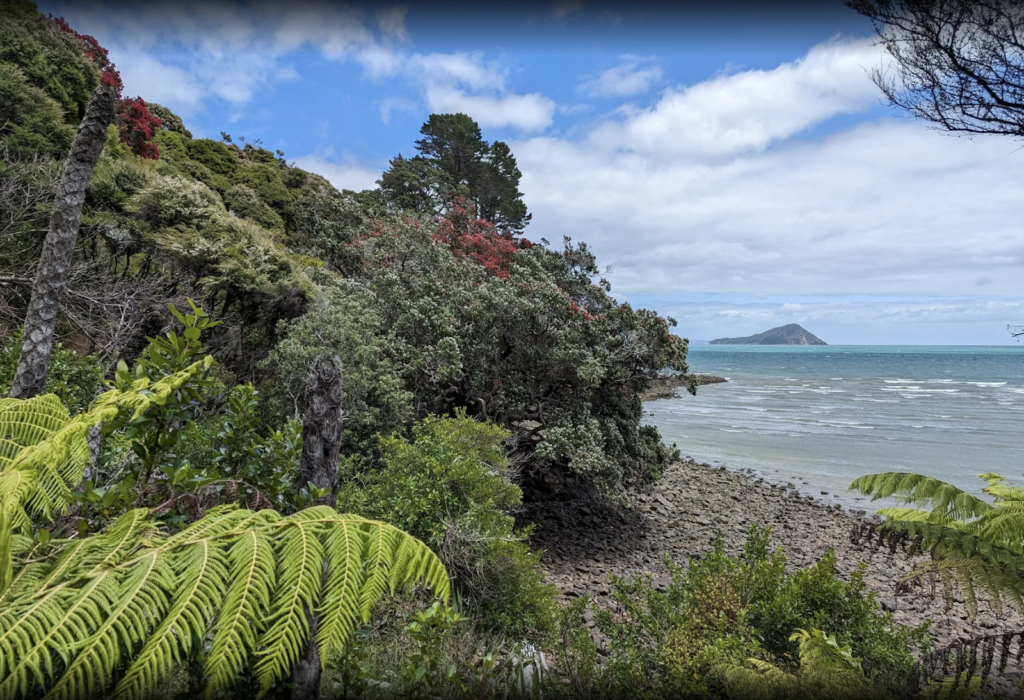
Pump Track and Bike Park
If you’re a keen biker or have a need for speed, then the Ride Coromandel Bike Park and pump track is the place for you with options for all levels. Using the network of mountain bike trails, flow trails, downhill and gravity jumps and pump tracks is free for all bikers.
The family skills area is suitable for all levels of riders. There are also grade 2, grade 3 and grade 4 descent trails and two intermediate single tracks in the Kauri Block: Ara Tuatahi at 5.5km long and Rickers Return at about 1.8km. To protect against kauri dieback disease please pass through the wash station before you ride. You can take your own bike or rent a bike from Hike & Bike Coromandel, based in Coromandel town.
Getting there:
The bike park is 4.1km from Driving Creek and based just a kilometre out of Coromandel town. You can either bike or drive there with parking available on site. You can also click Ride Coromandel Bike Park to open it in Google Maps.

Going to the Beach!
The Coromandel peninsula is most known for its golden beaches and picturesque bays that make for the perfect summer’s day. A few of our favourite beaches within an hour of Coromandel Town include Little Bay, Opito Bay, Crayfish Bay, New Chums Beach, Waitete Bay, Port Jackson and Otama Beach. Check out our previous article about the Top 6 Beaches in The Coromandel for more information.


Looking for even more activities in The Coromandel?
Head over to The Coromandel to find even more awesome activities, both free and paid, that you can experience while visiting The Coromandel to make your trip even more incredible.